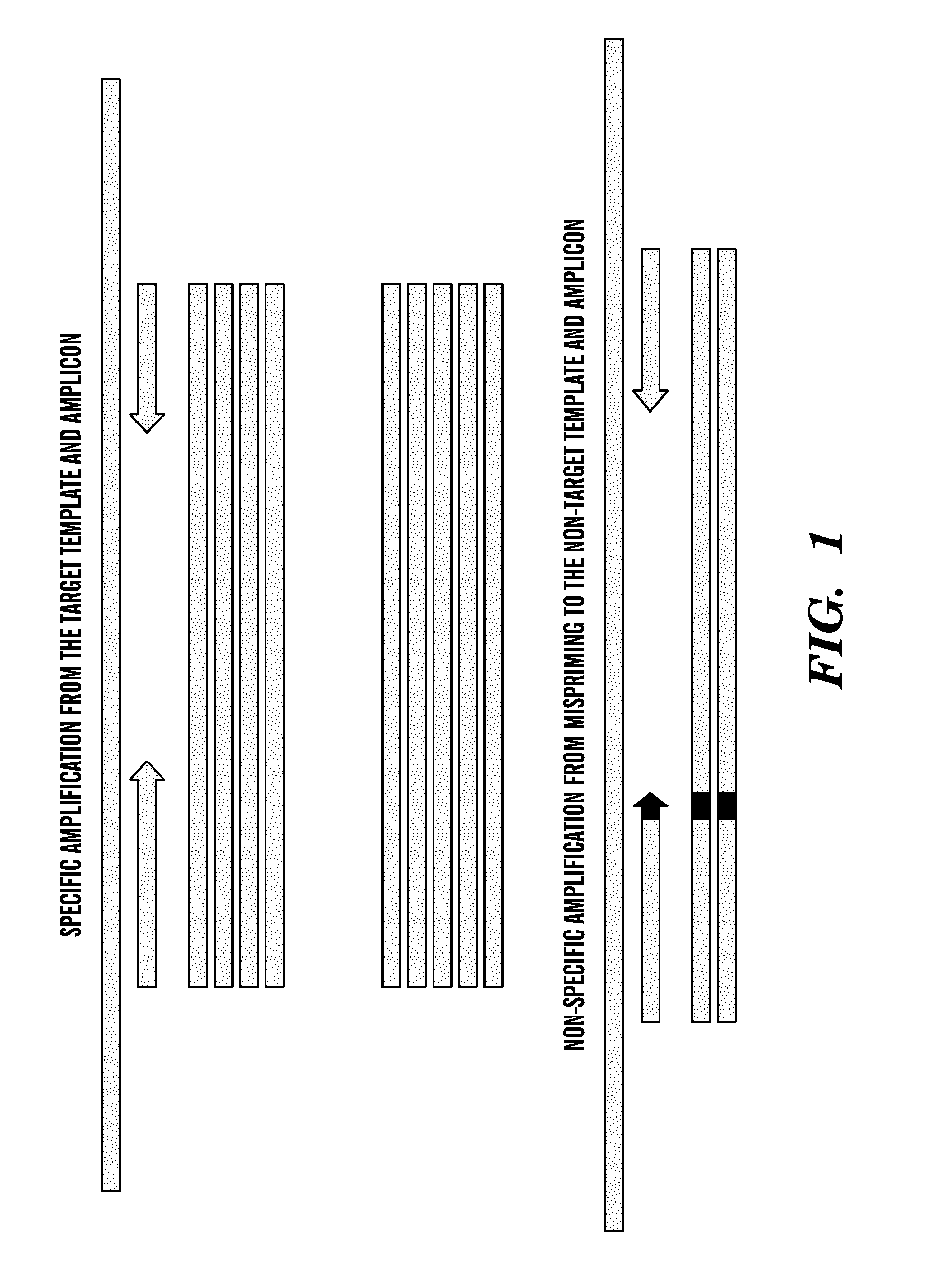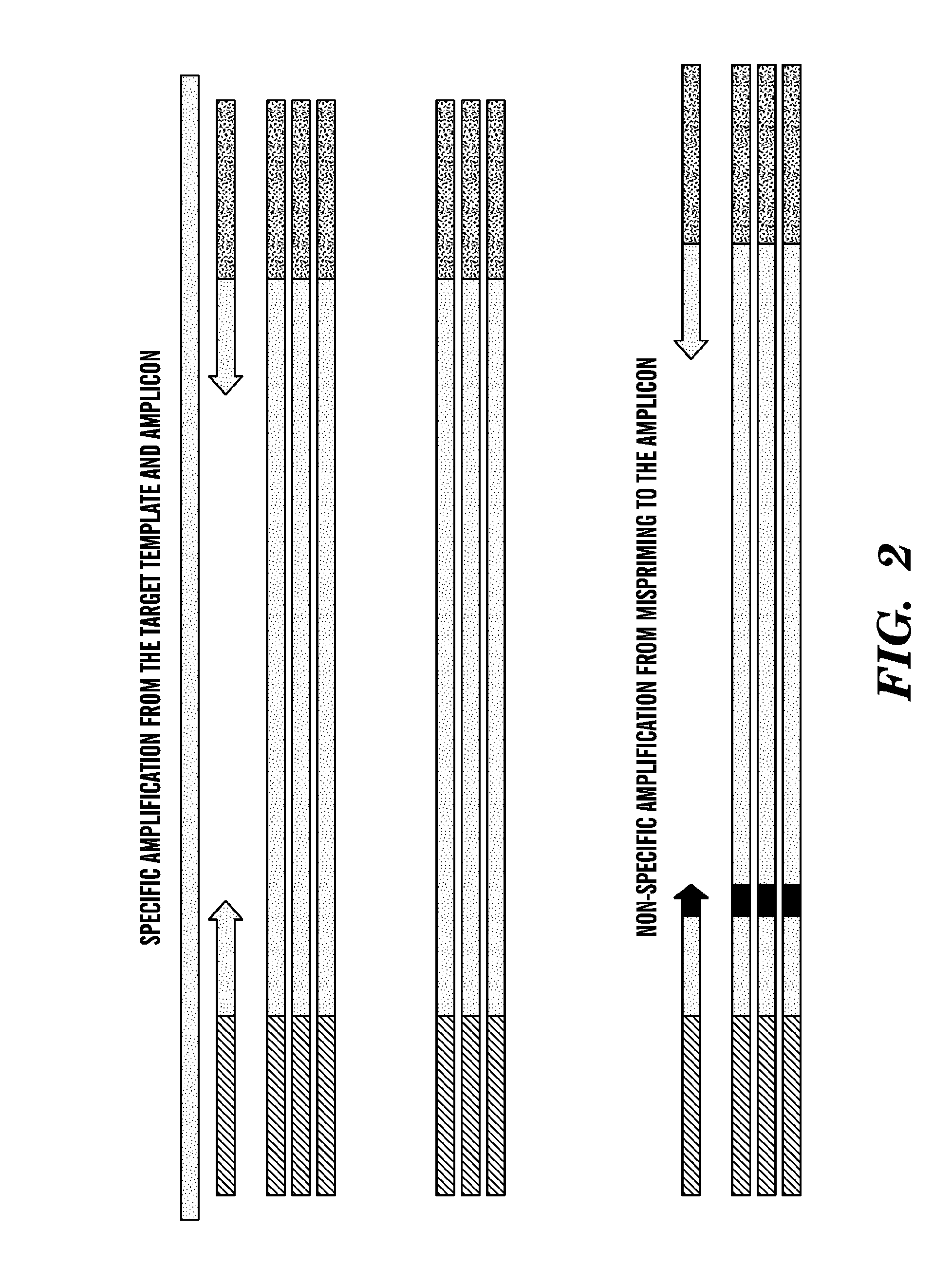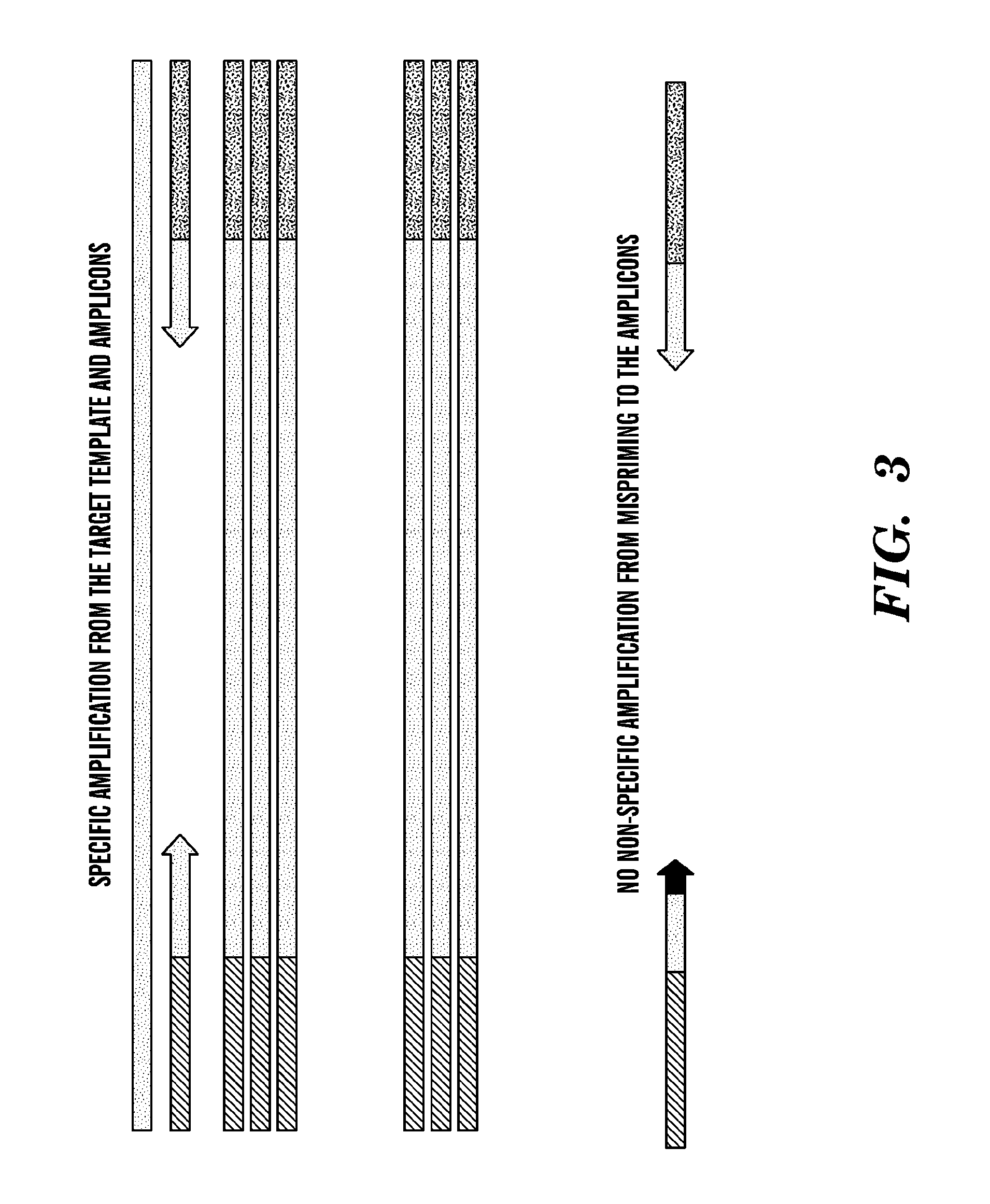Multimodal PCR target detection
a multi-modal, target technology, applied in the direction of microbiological testing/measurement, biochemistry apparatus and processes, etc., can solve the problems of primer interaction or “crosstalk”, approach can suffer from the same issues of leakiness and crosstalk, and primers can misprim
- Summary
- Abstract
- Description
- Claims
- Application Information
AI Technical Summary
Benefits of technology
Problems solved by technology
Method used
Image
Examples
example 1
[0369]A multiplex assay was performed using dual domain primers specific for V600E / D alleles of the BRAF loci and numerous alleles of KRAS comprising wild-type and mutant sequences in the 12th and 13th codon of KRAS. The primer sequences are shown in Table 2. Conditions for the two phase PCR amplification regimen are shown in Tables 3, 4, and 5. The results are depicted in FIGS. 4 and 5. FIG. 4 demonstrates that sets of primers as described herein do not amplify off-target sequences and specifically amplify target alleles when the targets are present. FIG. 5 demonstrates that when multiple targets are present, a multiplexed PCR reaction performed according to the methods described herein will specifically detect the presence of target alleles without any detectable background. Both FIGS. 4 and 5 also demonstrate that no “cross-talk” amplification occurs to a detectable level when one or more than one amplified target are accumulated to a high level.
example 2
IL-10 / TNFα Mulitplex Assay
[0370]A multiplex assay was performed using dual domain primers specific for either the wild-type or −1028A and −1028G alleles of the IL-10 locus and the wild-type and −308G and −308A alleles of the TNFα locus. The primer sequences are shown in Table 6. Conditions for the two phase PCR amplification regimen are shown in Tables 7, 8, and 9. The results are depicted in FIG. 6. FIG. 6 demonstrates that sets of primers used in a multiplex reaction as described herein do not amplify off-target sequences and specifically amplify target alleles when the targets are present without detectable background amplification. FIG. 6 also demonstrates that no “cross-talk” amplification occurs to a detectable level when one or more than one amplified target are accumulated to a high level.
example 3
Multimodal Assay
[0371]A multimodal assay can be performed to detect presence of the −308G and −308A alleles of the TNFα locus and the expression of IL-10 in the same reaction. First, the sample is subjected to a reverse transcriptase PCR(RT-PCR) regimen using an oligo dT primer. Briefly, a sample is mixed with reverse transcriptase, dNTPs, buffer and an oligo-dT primer. The sample is incubated at a temperature appropriate for the particular RT enzyme being used (e.g. 42° C.) and cDNA is synthesized. A commercial kit for RT PCR can be used, for example the SUPERSCRIPT™ cDNA Synthesis Kit (Cat No 11754-050; Invitrogen; Grand Island, N.Y.).
[0372]A PCR amplification regimen can then be performed. The primer sequences are shown in Table 10. The IL-10 primers span exon-intron junctions and will therefore not amplify DNA present in the same sample, permitting the specific detection of IL-10 mRNA. Conditions for the two phase PCR amplification regimen are shown in Tables 11 and 12. Producti...
PUM
| Property | Measurement | Unit |
|---|---|---|
| temperature | aaaaa | aaaaa |
| Tm | aaaaa | aaaaa |
| Tm | aaaaa | aaaaa |
Abstract
Description
Claims
Application Information
 Login to View More
Login to View More - R&D
- Intellectual Property
- Life Sciences
- Materials
- Tech Scout
- Unparalleled Data Quality
- Higher Quality Content
- 60% Fewer Hallucinations
Browse by: Latest US Patents, China's latest patents, Technical Efficacy Thesaurus, Application Domain, Technology Topic, Popular Technical Reports.
© 2025 PatSnap. All rights reserved.Legal|Privacy policy|Modern Slavery Act Transparency Statement|Sitemap|About US| Contact US: help@patsnap.com



